How does one go about assessing pre built hunting cabins for sale? My dad joined a hunting club when I was 12 and I’ve been involved in hunting clubs ever since. I’ve enjoyed taking all kinds of game and catching numbers of a variety of fish at clubs. However, my best memories of hunting club life come not just in the woods and on the waters, but in the camp houses, listening to and telling hunting stories, laughing at jokes, enjoying the camaraderie of like-minded friends, cooking with club members and being with my family.
Major Changes in Hunting Today
Today we’re seeing a change in land usage trends not only in the South but all across the whitetail deer’s range from leasing or hunting large properties with numerous hunters to hunting smaller acreages with families and friends and using these lands for hunting and fishing retreats by building cabins.
Years ago we were told that to manage a deer herd we had to have at least 1,000 – 2,000 acres.
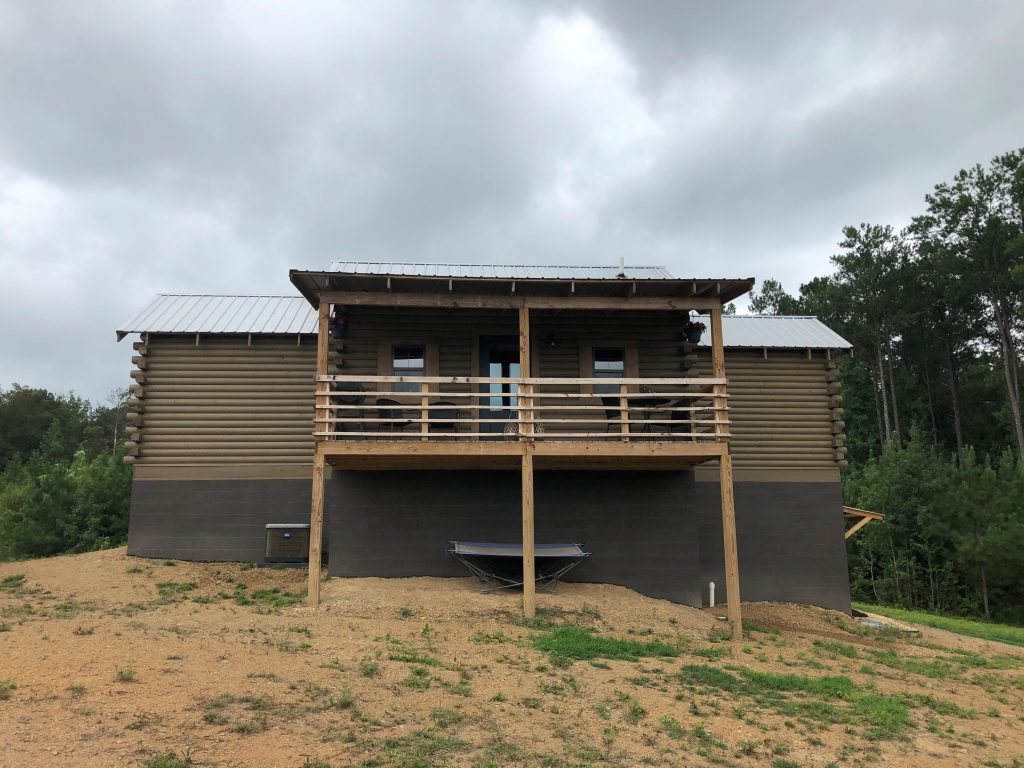
But in recent years, hunters like Scott Sharp of Lebanon, Tennessee, who manages three plots of 56, 40 and 15 acres each by planting crops for wildlife, takes his limit of whitetails every year on them. Also my friend, Jim Crumley, the creator of Trebark camouflage, consistently takes older-age-class bucks on his 40-acre property.
In his book, “Jim Crumley’s Secrets to Bowhunting Deer”, Crumley points out that if someone has the right 40 acres to hunt, that’s all the land they need.
Family members and friends are buying and leasing these small acreages for outdoor retreats. They’re building small cabins, often from log-cabin kits or pre-fab kits, so they can cook, eat and sleep together and tell stories around a fireplace or a fire pit.
One Problem Associated with Hunting Cabins
When I began to research building hunting lodges and camp houses from kits, I became aware of a maintenance problem I’d never realized that was one every hunter had to consider before building. Overlooking this item could cost you thousands of dollars in repairs after the cabin’s built.
If you hunt south of Birmingham, Alabama, the chances are very high that your hunting clubhouse may sink at some time – either in part or as a whole. To learn more about why this occurs, and what can be done to prevent the problem, I’ve talked with Mike Hayes, the owner of MDH Construction Services in Daphne, Alabama, an expert in identifying foundation problems and then repairing them.
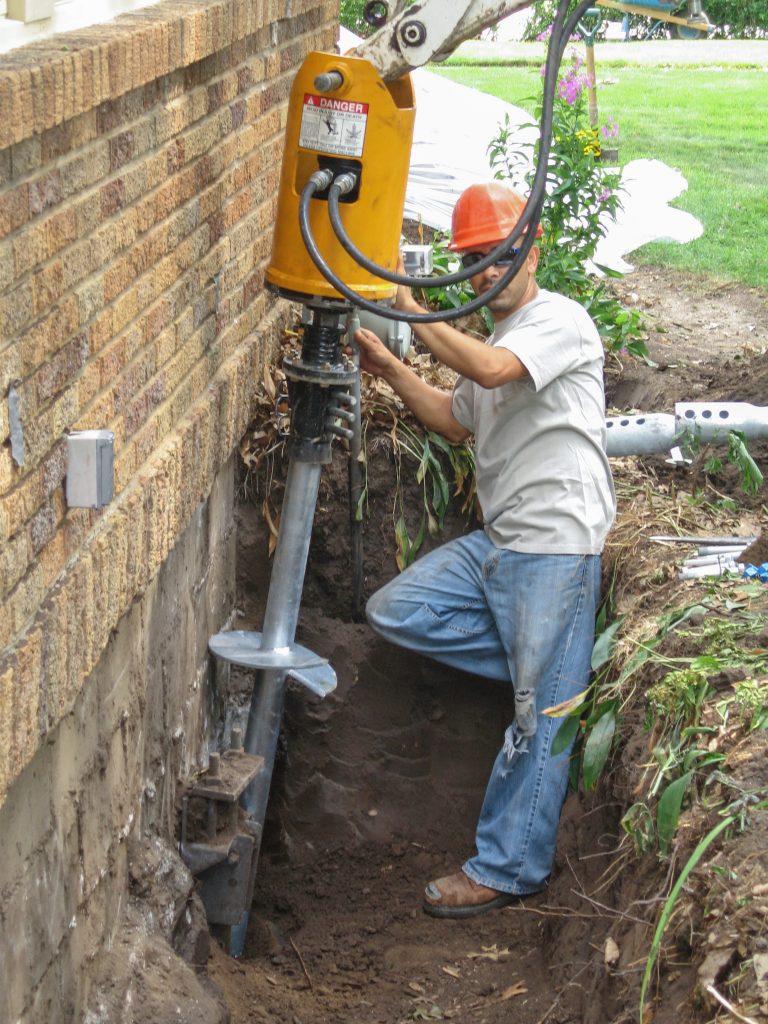
“Many hunting camps are built in central and south Alabama where there’s extremely poor clay and expansive soils,” Hayes explained. “Although this region of Alabama has fantastic soils for farming, these soils create many problems for people building hunting cabins, lodges and homes.”
The Best Money You Can Spend Before Building
“Once you have a reputable company to build your cabin, you need to hire a geo-technical engineer or a firm like mine to come out to the site and do a soil-boring test. From this test, you can learn not only what kind of soils are present where you plan to build but also how deep you’ll need to put your foundation to make sure your cabin won’t sink. This soil-boring test will tell you the depth of the load-bearing strata. These companies not only deal with soils but also with the water levels in the soil where you’re intending to build. They can handle the surveys for you too that will tell you about the topography of the land,” Hayes said.
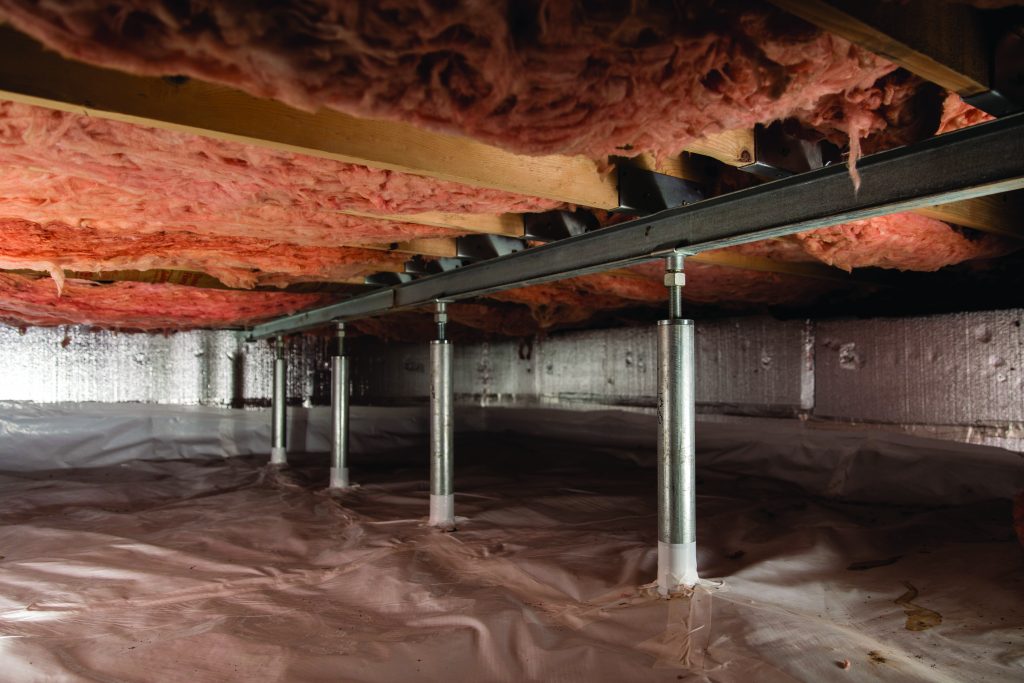
“These engineers can use helical steel piers that are twisted into the ground to reach stable soils to insure you have a solid foundation to keep a hunting cabin from ever sinking. Whether building a house on a slab or on pilings, the helical piers can be included in the footers prior to construction to support the foundation.”
Once the piers hit a depth with 2,000 PSI (pounds per square inch), which is between 6,000 and 7.000 pounds of torque, that’s considered a stable soil level. Then the weight bearing of the hunting cabin will be dependent on soils that won’t move, instead of soils closer to the surface that will or may shift.
Ways to Know When Your Existing Hunting Cabin Is Sinking
Signs of a sinking hunting cabin often can be seen within the first two to three months after construction. Over years, the signs of sinking only will become worse. Here are the signs to look for:
* Doors sticking and not closing;
* Windows sticking and not closing;
* Cracks in the sheet rock;
* Cracks in the siding or the exterior veneer; and or
* Bricks and mortar cracking due to these two construction materials moving, although they’re not meant to ever move. Usually sticking windows and doors are the first signs of a sinking foundation. If you’ve noticed these problems, you need to contact a foundation specialist to evaluate how bad the problem is. He can give you a rough estimate of what the costs may be to solve this problem.
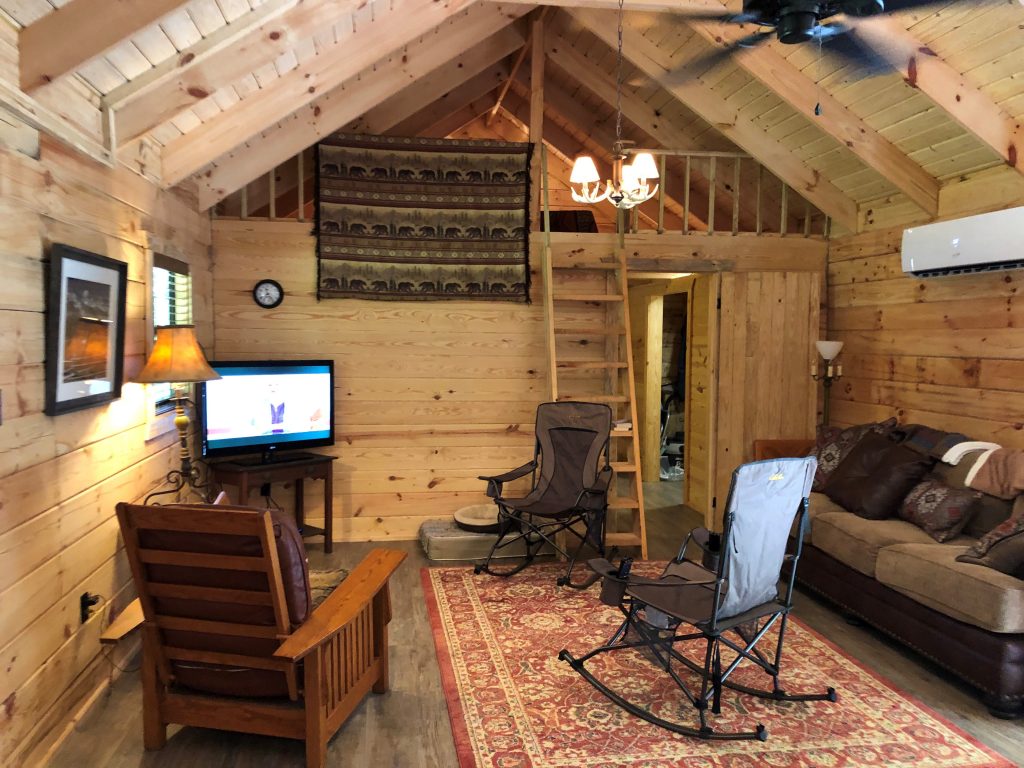
“Generally from the time an inspector determines what the foundation problem is, and what will be needed to repair that problem until the repair actually is made requires six to eight weeks,” Hayes explained.
The next question often asked is, “What will happen if we don’t repair this problem?” H
ayes and other experts emphasize that the problem only will become worse and more noticeable. In a few years, a portion of the cabin may collapse. Foundation problems never get better with time. The cost to fix these types of problems only increases the longer you wait to address the problems.
The Best Kit Hunting Cabin for You
Many companies offer cabin kits, and all you have to do is assemble the logs, put in the electrical and plumbing and then finish the interior however you wish. But this description is a simplistic definition of how to build a kit cabin. When you actually receive any of these kits, you’ll learn that you may have the same problem you’ll have if you’ve jumped on a tiger’s back, which means getting on is easy but getting off can be a nightmare.
A seemingly easy description of how to build a kit cabin doesn’t factor in the amount of time required, the additional people needed and the expertise necessary to put in the correct foundation, plumbing, wiring, sheetrocking, building interior walls, constructing the kitchen and cabinets, wiring appliances and roofing the cabin.
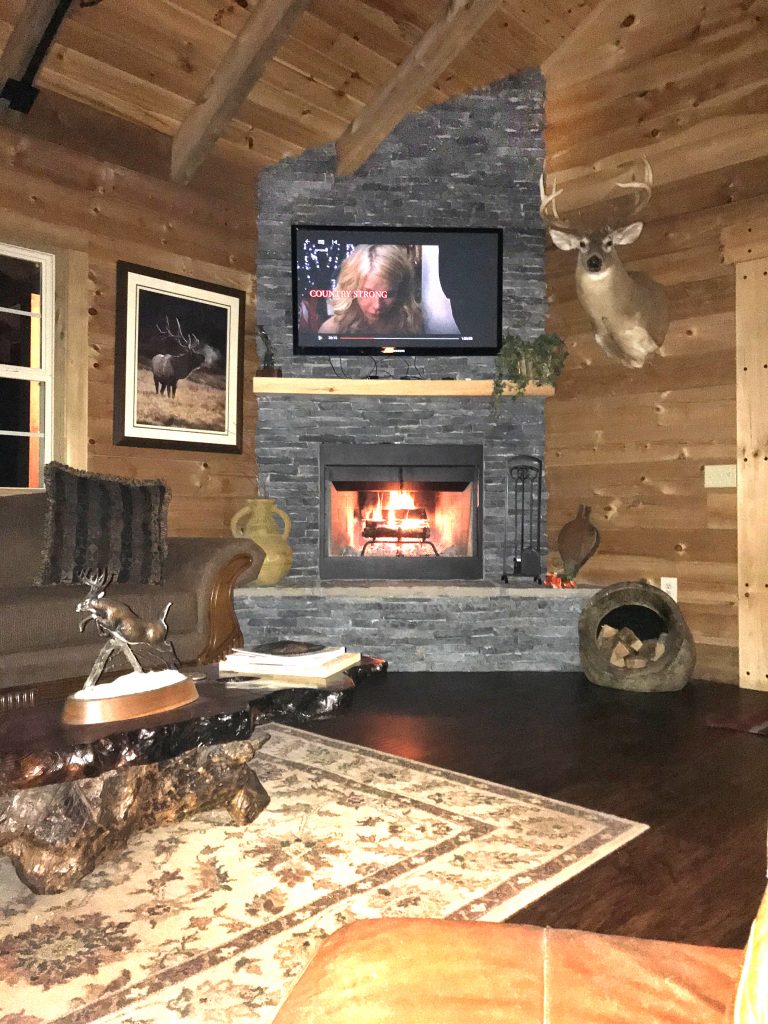
I’ve found that even the most-simplistic instructions often don’t reveal the actual labor and expense required to do it yourself. That’s why “Great Days Outdoors” has interviewed Brock Ray, the founder and owner of Brock’s Huntin’ Cabins and Brock’s Log Cabins, headquartered in Oneonta, Alabama. You also can see more information about and photos of Brock’s cabins on his TV show, “Brock’s Huntin’ Cabins and More” on the Pursuit Channel.
“I work with several mills in north Georgia, Texas, Utah and New Mexico that cut the logs to specifications for the cabins my company builds,” Brock Ray reported. “We build log cabins as small as 190-square feet up to 2,300-square feet. We offer eight varieties of log cabin siding: smooth, rough, machine hewn (log siding and chink siding), hand-hewn, rough sawn and beaded.”
Questions Outdoorsmen Should Ask Before Building a Kit Log Or Pre-Fab Cabin
What about Maintenance?
When asked to name items that people may overlook or worry about when they’re considering buying a hunting cabin, Ray explained, “Sometimes buyers believe there’s a large amount of maintenance with a log cabin. However, there’s no more maintenance for a hunting cabin than you’ll have if you build a house in the city.
For instance, we’ve learned that the darker the stain you use on the logs, the longer the stain will last, even if you build at a location where there’s a good amount of sun. On my personal log cabin, I only have to restain it about once every 6 years, just like you’ll have to repaint your house.”
How about Insulation?
Another question Ray’s often asked is, “How much insulation does a log cabin need?’ Ray’s companies use 4X8 tongue-and-groove logs, which means you don’t need any insulation, as long as you use heaters or a fireplace for warmth.
“If you’re in colder climates, we put hemp for insulation under the floors of the cabin,” Ray says. “I put aluminum siding on some log cabins if requested, and we’ll put 1/4-inch insulation between the siding and the logs. But generally the logs don’t need any insulation, if the cabins are built in the South.”
Why Study a Kit’s Floor Plan
Something else many people ask is, “Can we change the kit’s floor plan to meet our specific needs and wants?” Most of the hunting cabins Ray builds are custom cabins to include what people want.
“For instance, right now I’m building a cabin in Arkansas, and the folks buying the cabin prefer to have more windows than the kit cabin has,” Ray says. “So, we’re modifying the cabin for them.”
Ray’s most-popular cabin is the Badger that can be built in either a 600- or an 800-square foot model.
“I think the Badger is our biggest seller because the cabin can have two sleeping lofts to sleep eight people. We use many of the same appliances that are designed for tiny homes in our cabins. In one of our packages, we offer a two-eye stove, a sink, a refrigerator and cabinets,” Ray said.
The Three Ways to Construct Log Cabin Kits
The Cabin Kit That Comes with a DVD To Show How to Build the Cabin:
“If you’ve ever played with Lincoln logs when a kid, the construction of the cabin kit is much like that,” Ray explained. “I also include a DVD with each of our cabins that shows a buyer step-by-step how to build the kit hunting cabin. I’ve also put a copy of this DVD on my YouTube channel – Brock’s Huntin Cabins and More at (). If I sell 100 cabins in a year, there’s generally only about three cabins that a buyer buys the kit and builds it himself.”
Workers Build the Shell to Produce a Dried-In Cabin:
The shell includes the building of the cabin, putting on the roof and placing the windows, the doors and the porches. Then the buyer designs the inside of the cabin in any way he wishes and builds and finishes that inside himself.
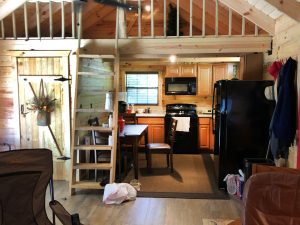
“We’ve found that very-few people buy cabin kits and want to stack the logs and build the structures themselves,” Ray reported. “If we build the shell, these folks have a building and can design the interior, put in the appliances, plan the sizes of the bedrooms and decide for themselves anything else they want inside the shell. To help our customers buy the correct types of appliances, heating and cooling systems, flooring and other essentials they’ll need to finish the cabin, my company is a dealer for some of the most-popular interior products the consumer may need. Or, if the builder prefers, he can purchase these same products from local vendors.”
A Turnkey Kit Cabin
This cabin is ready to be used once the build’s over. “I don’t like to build turnkey cabins, unless they’re local, because I can’t quote a finished cabin price,” Ray explains. “I’ll have to use local craftsmen like electricians, plumbers and floorers in other places. Prices these craftsmen charge are different all across the nation.”
Types of Log Cabin Foundations
According to Ray some people want their log cabins built on a flood plain or near a creek.
“That’s where we build the cabin on piers or pilings. We’ve had some cabins built 12-feet off the ground in flood plains. We can build a log cabin almost anywhere someone wants to build, as long as we have a good foundation, and the buyer understands what the words, ‘a good foundation,’ means,” Ray said.
Many of us will look at a photograph or possibly visit a kit dealer in search of a small cabin that can be built for family and friends. However, you may encounter unforeseen expenses in time, labor and money you may not have considered. This information from “Great Days Outdoors” hopefully will help you save time, money and energy before you determine which kit cabin you’ll build.




